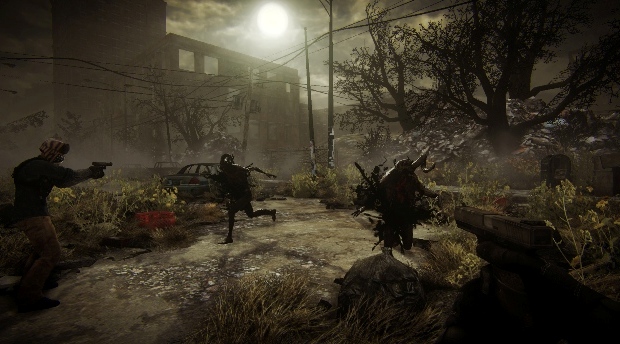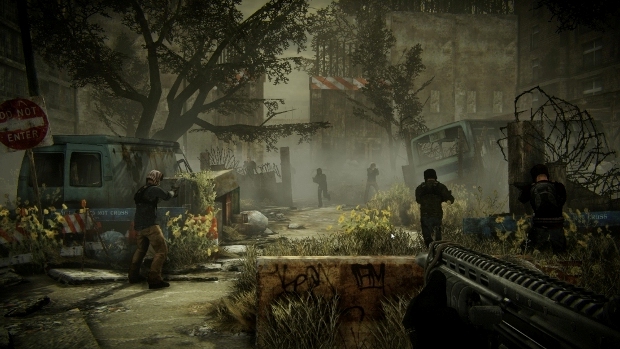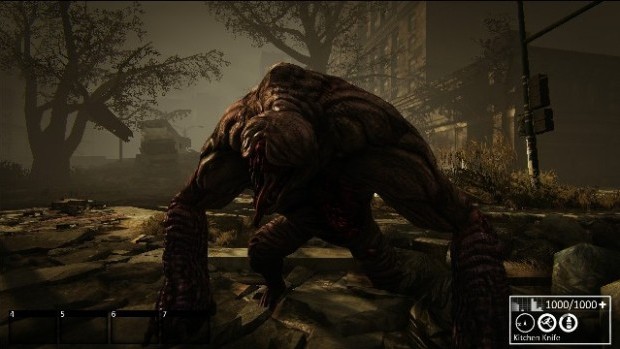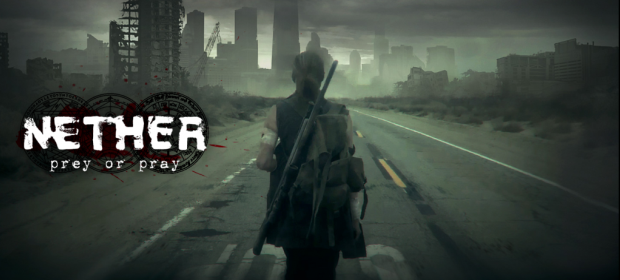In a world where gamers are becoming increasingly used to freedom, giving us choices to make is becoming an important factor during games development. Nether is a first-person, massive multiplayer survival-shooter that places you in a decaying world, with other players in the surrounding areas, and from there, you must adapt to survive. You begin in a sandbox environment and are free to explore until your heart is content.
The post-apocalyptic city features spots to camp out and stock up on supplies, organise your inventory or increase your stats, and also contains some nice scenic views (or about as scenic as you can get). The map looks great and the wreckages – broken bridges, fully destroyed trains and such – look oddly gorgeous in a bittersweet way. But the city is a dangerous place.

It is populated by creatures known as Nethers, which come in many different types. The most common you stumble across are Crawlers, and there are Shriekers who can summon other Nether to their location. The Golems are essentially tanks, while the Hunters can shoot needles from their chest. Watchers are the creepiest ones to come across – they lurk on top of buildings with a red beam shooting out of their eye trying to spot you. You definitely have to be careful around them. Others include the rare Reapers and the Mantis, which can fly. The Nethers’ unique ability enables them to teleport, so when battling them, they can disappear underground and shoot up behind you. It makes battles a lot more diverse and, with such a wide variety of enemies, it never gets monotonous.
The easiest comparison you can make is to the extremely successful survival sim, DayZ. In both games you must survive at all costs, whether teaming up with other players or killing them for your own gain. In Nether, you can be killed by players and enemies, but you can also starve. To stop this from happening, you must eat and drink what you can get your hands on. This can prove to be extremely difficult, as sometimes you can find yourself in a position where you are battling enemies and there is nowhere containing any items to satisfy your hunger and restore your nutrition. This mechanic is a great aspect as it can really affect how you choose to play. You may have to make choices that you are not very happy with.

It wasn’t too long before I stumbled across another player, wandering the decrepit city. Without saying a word to each other, we knew we could trust each other and off we set to secure an area. For a couple of hours we spent our time together killing the Nether and stocking up on whatever supplies we could find, sharing what we could. It had a real sense of camaraderie, similar to what Journey did with its multiplayer element. Teaming up is incredibly beneficial; however, it is not necessary. While having an extra ally will increase your chances of survival, taking cautious routes alone can also help. It’s down to preference at the end of the day.
That’s what makes Nether a great experience: it’s open to play however you want to play it. There was one moment where I was extremely low on supplies. Out of fear that I would run out of nutrition, I resorted to something I didn’t want to do: with hesitation, I took out my crowbar and beat my partner repeatedly, killing him. I then proceeded to take what I needed and some more, and went on my way. The decision wasn’t an easy one as we had bonded over a short space of time, but it was one I felt was necessary in order to survive.
There are consequences for killing other players. If you kill a player, you are then a marked target for the Nether. More and more will appear, consistent with the number of players you kill. If you want to kill other players, you must be prepared for larger battles with the Nether. Eventually the stigma will erode, and even wear away completely if you don’t kill anymore. But you have to ask yourself the question: is it worth killing this new player for his crowbar and pistol if it means more enemies? That’s your call, and it’s these decisions that make Nether so diverse an experience.

The Safe-zone is another wonderful feature. In these areas, you cannot be harmed whether by other players or any other enemies. If you need a breather or a spot to regroup, then a safe-zone is your best option. It also contains a Global Inventory. With this, you can store items or weapons that you do not want before you go off to explore some more – a very handy addition. If you prefer to sell or buy some items, you can do just that inside these areas. Sometimes safe-zones can come under attack by the Nether when the Anti-Nether Devices set up around them go down, and Nether attack. You must repair these devices in order for the enemy to retreat. There have been instances where someone with a sniper rifle has shot another player trying to repair these devices in order to steal his loot. The unpredictability in situations like this means the usual FPS style has to be thrown out of the window.
VERDICT: Nether is a fantastic experience that, in the end, comes down to personal preference on how you choose to play it. Although it looks great, it’s not without technical hitches. A couple of bugs were found that had me restarting the game, but it’s worth getting over those bumps in the road and focusing on the positives. Get a group of friends together, wander around and meet brand new people to either play with or annihilate shamelessly to rob them of their firepower. Nether gives you a world to explore, full of hazardous journeys and countless opportunities to create fantastic, emergent moments, with or without others.
With so much creativity and so many alternate ways to play, Nether really is a special game. The fact it is only in Beta, too, is incredible. It will be very exciting to see where the finished product ends up. If this was anything to go by, it will be absurdly good. The sky is the limit.

VERY GOOD. An 8/10 is only awarded to a game we consider truly worthy of your hard-earned cash. This game is only held back by a smattering of minor or middling issues and comes highly recommended.
Review code provided by publisher.






